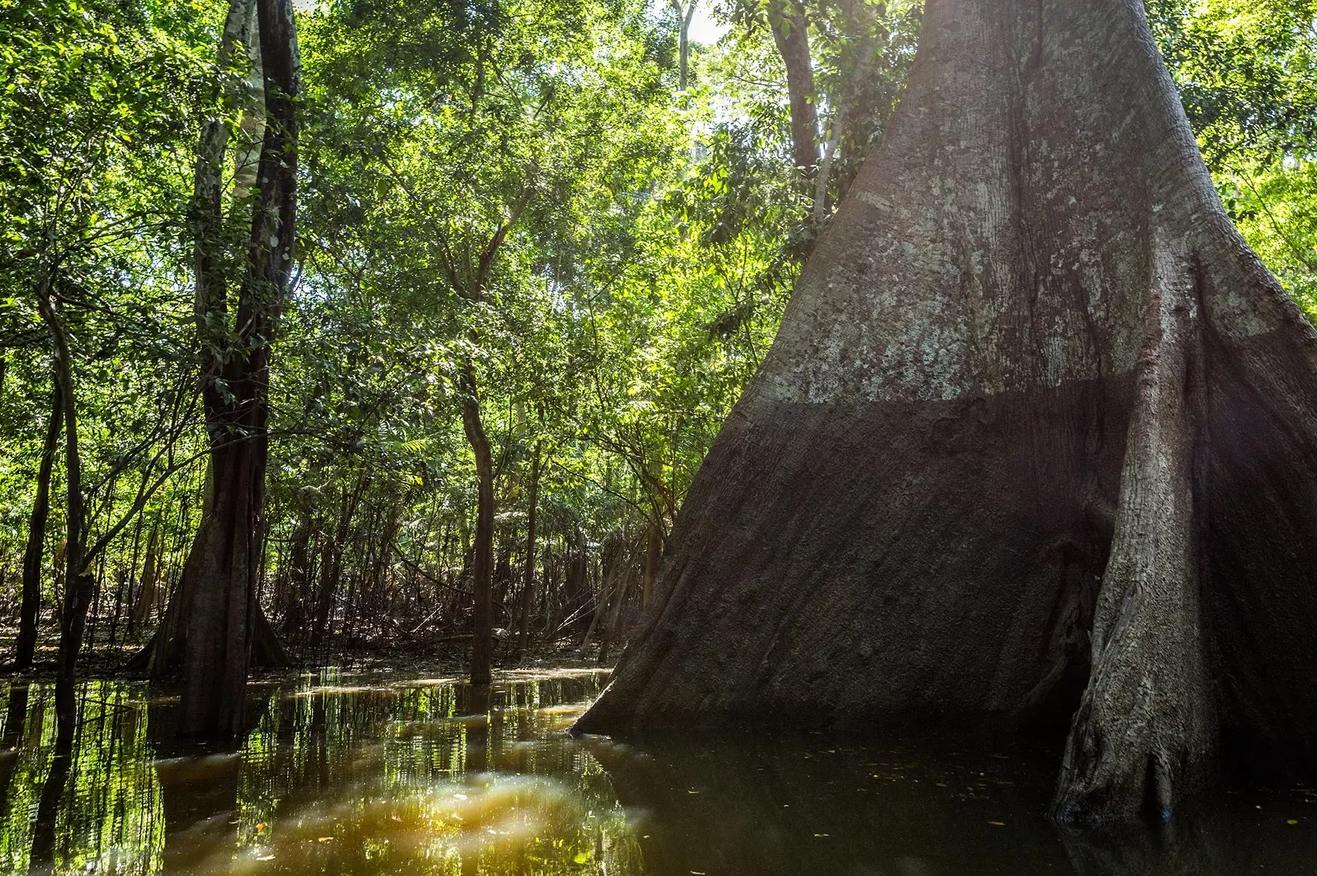
In the Amazon rainforest, for every three trees that die due to drought, a fourth tree dies as well, even if it is not directly impacted. That’s what recent research discovered.
As climate change causes increasingly frequent and severe dry periods in the Amazon Basin, the rainforest in South America may lose its rain and, with it, its moisture(水分) supply. The forest is threatened by a lack of rain because it breathes water: when it rains, the soil absorbs as much as the plants, and both release a large quantity back via evaporation and transpiration. The forest creates most of its own weather through this atmospheric(大气的) moisture recycling, generating up to half of the rainfall in the Amazon Basin. And, although it is incredibly effective, the moisture recycling system ultimately depends on how much water is initially put into the system. A lack of rain reduces the amount of water recycled, and there will be less rainfall in neighboring areas, placing even more sections of the forest under serious stress.
Climate science predicts that what used to be extraordinarily dry years may well become the new normal. These frequent droughts are already producing quantifiable(可量化的) changes to the Amazon’s moisture network. Scientists use these observations to understand and model the consequences of a future climate. But droughts have different effects on forest systems within the Amazon. Trees and forest systems there differently adapted to water availability, as some regions commonly exhibit a distinct dry season while others have rain all year round. Even the dry season-adapted parts of the Amazon forest won’t necessarily survive a new climate normal, and the risk of becoming savannah(稀树草原) or no trees at all is high. The consequences for biodiversity would be disastrous, but the same goes for the local, regional, and global climate.
Yet not all is lost. And there is still a lot we can do to try and stabilize the Amazon and we know how we can do that: by protecting the rainforest from logging, and by rapidly reducing greenhouse gas emissions to limit further global warming.
本时文内容由奇速英语国际教育研究院原创编写,未经书面授权,禁止复制和任何商业用途,版权所有,侵权必究!(作者投稿及时文阅读定制请联系微信:18980471698)1.What’s the most essential to the moisture recycling system in the Amazon Basin?
A The evaporation and transpiration.
B The capacity of soil to absorb water.
C The quantity of water plants release.
D The initial amount of water entering it.
解析:选D。D推理判断题。根据第二段倒数第二句的“the moisture recycling system ultimately depends on how much water is initially put into the system”可知,水分循环系统最终取决于最初进入系统的水量。故选D。
2.What phenomenon is described in the second paragraph?
A Climate change leads to frequent droughts in South America.
B The shortage of rain harms forest growth cycle.
C Drought altered the water cycle in the rainforest.
D The rainforest is able to create its own weather.
解析:选C。C细节理解题。根据第二段内容,特别是首句和尾句,并结合关键词“moisture recycling”可知,该段具体解释了气候变化导致的干旱使得热带雨林的大气水循环受到影响这一现象。故选C。
3.Which of the following can best serve as a subtitle of Paragraph 3?
A Chain reaction.
B A new climate normal.
C Still much to do.
D Effects on forest systems.
解析:选B。B段落大意题。根据第三段首句(中心句)“...become the new normal.”以及后文由此展开的描述“However, even the dry season-adapted parts of the Amazon forest won’t necessarily survive a new climate normal”等可知,该段主要描述了干旱可能会成为一种新常态,解释了科学家依据干旱的数据做出的预测,以及即使是亚马逊里适应了旱季的部分森林也不一定能在新的气候常态下生存下来。故选B。
4.Which of the following is a characteristic of the forest systems in Amazon?
A They need lots of water all year round.
B They partly survived the new normal.
C They can lead to an increase in biodiversity.
D They adapt to water availability in different ways.
解析:选D。D细节理解题。根据第三段“Trees and forest systems there differently adapted to water availability”可知,热带雨林的树木对水的可用性的适应能力不同,因为森林的一些地区会表现出明显的旱季,而另一些地区全年都在下雨)。故选D。